Manufacturer News
Could a Citroën ë-Jumpy Hydrogen be Feasible in Australia?
Currently (July 2022) in Australia, hydrogen refuelling stations are found in Melbourne, Sydney, and Brisbane. Green hydrogen (H2) is a cleaner fuel for running a motor to power a vehicle. H2 is produced using electricity that has been made from renewable resources (sun, wind, hydro) and is one effective way to aid the reduction of unwanted gas emissions. Hydrogen is also the simplest and most abundant chemical element in nature that is almost always bound to another element. It can be used as a clean and inexhaustible energy. You can even create a hybrid vehicle where hydrogen and batteries can combine to propel a hydrogen-ev forwards.

Citroen have created a great light commercial van called the Citroën ë-Jumpy Hydrogen. While it is currently only sold in a few markets in Europe (where there are many more hydrogen refuelling stations), the light commercial van combines the best technologies of a hydrogen fuel cell and a battery for motoring. Perhaps we might be able to get an ë-Jumpy Hydrogen van in Australia to run the Melbourne to Brisbane Hydrogen Highway?
Citroën’s entire light commercial vehicle (LCV) range is already fully electrified overseas, and Citroen say that the ë-Jumpy Hydrogen offers the widest electrified range to meet the heavy demands of business professionals. Citroen Australia is yet to bring any of these ev vans to Australia.
The Citroen ë-Jumpy Hydrogen van has a hydrogen fuel cell and rechargeable batteries, the first Citroën powered by this form of energy. While accommodating this new hydrogen/electric technology, it still manages to retain the practical volume and load carrying capacity. The hydrogen and electric components are integrated into the van’s ingenious design, ensuring that the componentry sizes have no impact on load capacity.

Citroën ë-Jumpy Hydrogen LCV has a range of over 400 km. The three 700 bar carbon-fibre hydrogen tanks are stored on the horizontal below the load floor, which sit next to the battery under the front seats. These hydrogen tanks can be filled in just three minutes!
So how does it all work? The Citroën ë-Jumpy Hydrogen LCV is a fully electric vehicle and benefits from a 45 kW fuel cell that produces electricity by consuming hydrogen. A 10.5 kWh battery takes over automatically once the hydrogen tank is empty. The battery itself is automatically charged using electricity that is generated by consuming hydrogen or by using a cable at any typical electric-vehicle charging station.
The Citroen ë-Jumpy Hydrogen has identical specifications to the Peugeot e-Expert Hydrogen and Opel Vivaro-e Hydrogen vans in the UK. Citroen say that the ë-Jumpy Hydrogen LCV is for businesses that need more than the standard EV van’s 300 km of driving range, or for those who have no time to wait around recharging before getting to the next job. The Citroën ë-Jumpy Hydrogen is expected to offer over 400 km (249 miles) of driving range.
Citroen say that Battery Electric Vehicles (BEVs or EVs) are perfect for all applications with range requirements of 100-300 km a day if there is access to overnight charging. But with the improvements in battery technology leaping forward, time is currently on the side of BEVs/EVs.
Citroën ë-Jumpy Hydrogen specs include:
a total range of over 400 km
3-minute refuelling of the hydrogen tanks
three 700-bar hydrogen tanks (70 MPa), with 4.4 kg of hydrogen under the floor when at full capacity
range with 10.5 kWh battery only being used: 50 km
front-wheel drive
100 kW of power and 260 Nm of torque developed from the permanent magnet electric motor
an 11 kW three-phase on-board charger
2 van lengths available (Medium 4.95 m long, and XL 5.30 m), with the same loading volume characteristics as any equivalent diesel or purely electric versions
cargo space of 5.3 m3 to 6.1 m3
payload up to 1100 kg
towing up to 1000 kg
Chrysler Airflow EV Concept
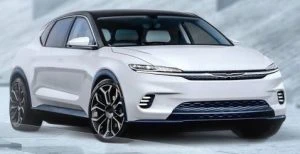
Chrysler Airflow EV Concept
For me, there are two cars in particular I enjoy seeing, and both for which proudly wear the Chrysler badge. I always take the time to admire them every time I walk past one on the street, or I’ll enjoy watching one as it rolls by out on the road. For me, the Chrysler 300 and the Chrysler Valiant are two great looking cars that provide plenty of power, comfort, and a special drive.
The Chrysler 300 came directly out of the American Chrysler line-up, and it offered a gangster-style (chunky, high waistline, plenty of power, large grille) with luxury and comfort, sedan or wagon. The Chrysler Valiant was a full-size car which was sold by Chrysler Australia between 1962 and 1981. To begin with, Chrysler Australia received the Plymouth Valiant from the United States and rebadged it to sell to the Australian market. However, from the second generation, which was launched in 1963, the Valiant was fully manufactured in Australia. The late 70s versions of the Valiant was my favourite.
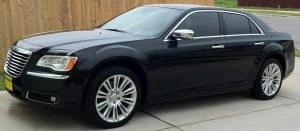
Chrysler 300
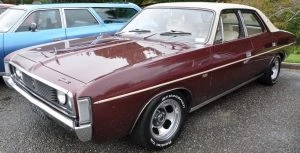
Chrysler Valiant
So, what’s happening in Chrysler’s corner today?
January 2014 saw Fiat S.p.A. announce a deal to purchase the then struggling Chrysler brand, making Chrysler Group a subsidiary of Fiat S.p.A. In May of that year, Fiat Chrysler Automobiles (FCA) was established by merging Fiat S.p.A. By the end of the year, this group was renamed FCA US LLC to reflect the Fiat-Chrysler merger.
In 2021, Stellantis N.V. was formed, which is a multinational automotive manufacturing organization that is made up of a half-and-half merger between the Italian-American company Fiat Chrysler Automobiles (FCA) and the French PSA Group. Stellantis is headquartered in Amsterdam, and, in terms of a global scale, in 2021 Stellantis was rated as being the world’s 5th largest automaker behind Toyota, Volkswagen, Hyundai, and General Motors.
Though at the moment there aren’t a load of new cars with the Chrysler logo coming out, Stellantis is aiming to be an all-electric brand before 2030. At a recent show in America, Stellantis revealed a rather nice-looking Chrysler Airflow concept, suggesting that there is a lot more to come from Chrysler in the future.
Inside the Chrysler Airflow cabin is seating for four. Plenty of recycled materials and vegan leather are just some of the interior features on offer. It is a luxury car with a full panoramic glass roof, ambient lighting, and excellent sound proofing.
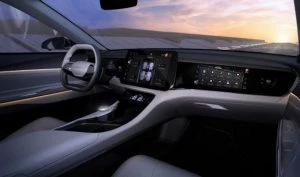
Chrysler Airflow EV Concept
Underpinning the new STLA EV platform, Stellantis made the Chrysler Airflow concept a reality, choosing this car for showing off the Airflow’s latest innovative drive-system technology that is fully connected to customer interaction and advanced mobility. The Airflow emphasises Stellantis’ desire to be cutting edge, to keep up with connectivity, and to produce sophisticated digital interaction.
The Chrysler Airflow EV concept boasts STLA Brain and STLA Smart Cockpit technology that connects passengers with their own digital lives. Thus, there are display screens front and rear, which are configured to suit each occupant, and these individual screens can interface with other screens inside the car using sweeping gestures. Each seat has its own camera, which can also be used for video conferencing as well as selfies. The Airflow EV also has autonomous driving capability, with power delivered by two electric motors, one on the front axle and one on the rear axle. Each electric motor on the concept Airflow boasts 150 kW, with a driving range said to be somewhere in the vicinity of 550–650 kilometres.
Certainly, the Chrysler Airflow EV concept is a neat looking Electric Vehicle, with tidy exterior lines, excellent aerodynamics, a long wheelbase, and a wide stance with a low profile. It would be swift, luxurious transport, fitting for the Chrysler brand, and a nod to the Chrysler greats.
Fuel Miser Comparison (2010/2022) Smart-VW

I thought I’d look at a list of cars that featured in an article written back in 2010, where I compared some of the thriftiest cars at that time. These were cars which had been designed to function as some of the world’s best fuel sippers. These vehicles were sold new in Australia, but I thought I’d add a new twist this time by adding what we can consider as the brand new version of these old models with their statistics for fuel consumption as a comparison – you know, a bit of nostalgia along with the new, and what’s changed – or not.
Note that the fuel consumption figures are based on the number of litres of fuel consumed every 100 km travelled. Often real world situations can play havoc with Lab tested fuel consumption figures, but this definitely gives you an interesting picture And, here is the list that is in alphabetical order – just to be helpful:
Smart
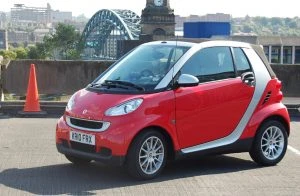
2010 Smart ForTwo
By far the smallest car being talked about in 2010 with excellent fuel consumption was the Smart ForTwo. It still fits into car parks like you wouldn’t believe! Small and safe, comfortable and peppy, any smart CBD commuter would be tempted by the tiny Smart ForTwo. It boasts a combined fuel economy figure that sits well under 5 litres/100 km – and this all coming from a ULP motor. Currently you can’t buy any new Smart car in Australia, though I’ve heard that, in the near future, they are making a comeback with purely electric power and with new design.
SsangYong
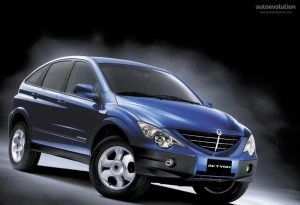
2010 SsangYong Actyon SUV
At the time, the 2010 SsangYong Actyon was about the most frugal SUV you could buy new at an impressively low price. The economic SUV has muscly looks and a rugged design that could see the vehicle handling tough off-road terrain with ease. SsangYong uses a 2.0 litre turbo-diesel engine in this vehicle, which packs over 300 Nm of torque to go with its excellent 4×4 underpinnings. Getting any 1.8 tonne vehicle to manage under 5 litres/100 km is a feat. So, well done to SsangYong! Currently, no more SsangYong vehicles quite match the excellent economy of an Actyon Diesel.
Suzuki
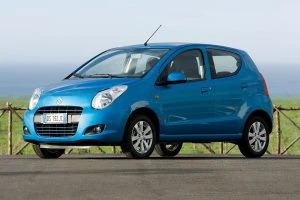
2010 Suzuki Alto
Budget priced, and one of the few petrol powered cars back in 2010 delivering awesome fuel economy was the Suzuki Alto. The Suzuki Alto 1.0 litre GL and GLX has an attainable fuel economy figure of 4.8 litres/100 km. The Suzuki Alto is also nice looking (bug-eyed), has six airbags, and even comes with ESP as standard in the GLX model. Great for around town – you’d be nuts to not consider an Alto.
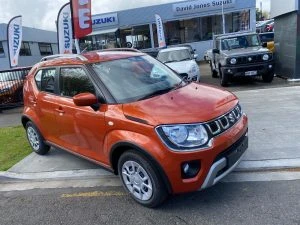
2022 Suzuki Ignis
There are no new Altos in 2022, but Suzuki do offer us the awesome little Suzuki Ignis GL Manual and GLX auto. These cars use a 1.2-litre ULP motor and deliver a similar fuel consumption to the 2010 Alto. Safety in new Suzuki cars has taken a big leap forward, so too has all the modern technology. Brand new Swift and Baleno models are definitely worth a look. These are also economy-driven cars with decent comfort, technology, and practicality.
Toyota
Where would the world be without Toyota? For a very frugal, spacious, and practical drive, the clean burning 2010 Toyota Prius III offered a 1.8 litre petrol hybrid engine. It didn’t come cheap, but it was certainly friendly on the environment. You could expect around 4.0 litres/ 100 km – sometimes better.
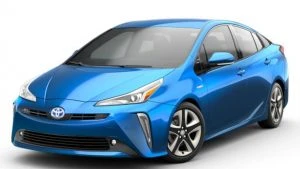
2022 Toyota Prius
You can now buy a 2022 Toyota Prius model for between $42–50k. These are nice cars and much more impressive to look at than the older models. They are safe and packed with excellent features. The Prius still continues with the same petrol-electric engineering that made it such a standout when it was launched in 2001. The same basic technology remains for the 4th-generation Prius, as well as all Toyota/Lexus hybrids these days. So, what a new Prius offers is a small-capacity 4-cylinder engine that works through a planetary gear set to dispense the delivery of power to the front wheels (or also the rear wheels in SUV variants). The current Toyota Prius is powered by a 72kW/142Nm 1.8-litre engine that combines with an electric motor to produce a joint maximum power output of 90kW and a claimed fuel consumption of 3.4 litres/100km. Better than ever! Toyota newest vehicles: the CH-R, Camry, Corolla, RAV-4, and Yaris Hybrid models are available with very low fuel consumption figures. Toyota and Honda are masters of the Hybrid-game, and have been for quite some time.
VW
Back in 2010, the Germans offered plenty of cars with excellent fuel consumption. Volkswagen has for a long time offered well-designed, reliable and fuel efficient motorcars. They are generally refined, elegant, and roomy, and the 2010 VW Golf 77TDI variant easily boasts fuel economy figures below 5 litres/100 km on a combined cycle.
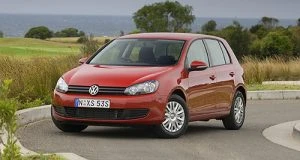
2010 VW 77TDI
2022 sees the Golf Hatch with 5 models, and in Wagon form it has a couple of nice new variants. The base models use a 110TSI 1.4-litre ULP motor, which is a 4-cylinder that is smooth and can return a claimed 5.8 litres/100 km. 250 Nm of torque offers muscle when you need it, and the car cruises at high speed effortlessly. The 8th-generation of the Golf brings not only fresh external and interior design, but it is also the safest, most tech-laden ever.
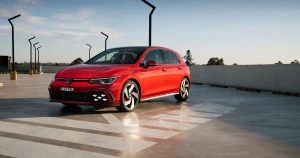
2022 VW Golf 110TSI
There are other new cars right across the auto-manufacturing spectrum now that offer superb fuel economy or EV power alone. It’s interesting how in that time (2010–2022) we’ve seen auto manufacturers taking a shift away from providing the new-car buyer with several frugal diesel family options to a fleet that is now a lot more Hybrid in flavour. It’s a change coerced by new government law and regulation. However, hybrid vehicles are superb automobiles that offer top fuel consumption figures and practicality, creating that much needed bridge between purely fossil fuel vehicles and completely EV-powered automobiles
Do check out the brand new arrivals. Cars like the Hyundai IONIC, Hyundai KONA, Kia EV6, Kia Niro, Mazda MX-30, BMW i and Hybrid models, Mercedes Benz EQA and EQC models, MG HS EV, Polestar cars, Tesla, and Volvo’s Recharge and Hybrid models are just some of the amazing new cars available that we can now buy that weren’t even a showing back in 2010.
Happy commuting!
Fuel Miser Comparison (2010/2022) Audi-Fiat

One of the easiest ways to counter any rises in the fuel prices is to look at downsizing to a more economical car. If this sounds something you’d be into, then you certainly won’t be the first person to do so. We’ve just purchased a smaller Honda Jazz as a run around. Just think back to the fuel crisis in the seventies.
Anyway, it’s always an interesting topic, and who wouldn’t mind driving a new- to late-model car that spends less time at the gas pump. If you are a commuter, then you’ll appreciate owning a car that doesn’t cost the earth to run.
I thought I’d look at a list of cars that featured in an article written back in 2010, where I compared some of the thriftiest cars at that time. These were cars which had been designed to function as some of the world’s best fuel sippers. These vehicles were sold new in Australia, but I thought I’d add a new twist this time by adding what we can consider as the brand new version of these old models with their statistics for fuel consumption as a comparison – you know, a bit of nostalgia along with the new, and what’s changed – or not.
Note that the fuel consumption figures are based on the number of litres of fuel consumed every 100 km travelled. Often real world situations can play havoc with Lab tested fuel consumption figures, but this definitely gives you an interesting picture And, here is the list that is in alphabetical order – just to be helpful:
Audi
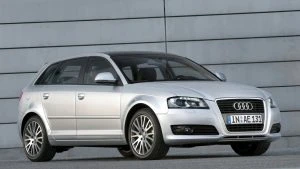
Audi A3 TDI 2010
The 2010 Audi A3 TDI offered a tidy package with practicality and comfort on its side. It uses the 1.9-litre TDI engine linked to a 5-speed manual gearbox that has plenty of useful torque and manages a fuel economy figure of around 4.5 litres/100 km. It was probably one of the roomiest economy cars on this list at the time.
Audi’s 2022 A3 is available in three model grades and two body styles ” Sportback (hatchback) and Sedan. Two powerplants are available for the stylish new A3. The most fuel efficient is the 35 TFSI 1.5-litre turbo-petrol with mild-hybrid technology producing 110kW/250Nm with a claimed 5 litres/100 km combined economy.

Audi A3 2022
Audi also has the smaller A1 model to add to your shopping list, which you can now buy new. It has a 1.0-litre 3-cylinder ULP engine with 85kW/200Nm and a 5.4 litres/100 km combined economy, or a 1.5-litre four-cylinder 110kW/250Nm option with a 5.8 litres/100 km combined economy.

Audi A1 2022
BMW
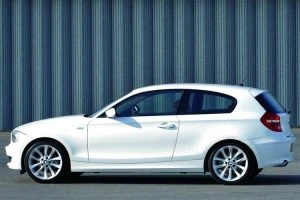
BMW 118d 2010
At the time, another small German car, the 2010 BMW 118d, offered a fun drive and used an automatic gearbox with a stop/start function for the engine. It also offers a slick 6-speed manual gearbox option and achieved an impressive 4.5 litres/100 km for its combined fuel economy. You have 300 Nm of torque, and it feels a punchy little powerhouse, and it’s also RWD!
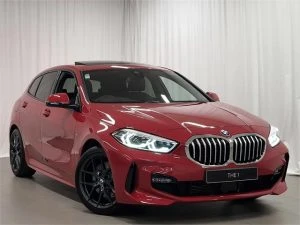
BMW 118i M Sport
In 2022, the 1-Series is available in a 118i M Sport version, which uses a 103kW/220Nm three-cylinder turbo ULP (unleaded petrol) motor with a claimed 5.9 litres/100km combined.
Citroen
The French loved to rival the Germans, and still do, so it was no surprise to see that the Citroen C3 and C4 featured in 2010. They are still nice-looking and comfortable cars. The Citroen C3 HDi offers the driver a tidy fuel consumption figure of 4.4 litres/100 km, while the bigger and roomier C4 HDi could deliver 4.5 litres/100 km in combined fuel economy runs.
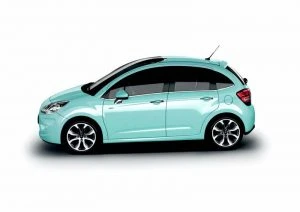
Citroen C3 2010
2022 sees Citroen’s C3 with much more grown-up styling, and a 1.2-litre three-cylinder 82kW/205NmTurbo petrol engine that delivers the power through a 6-speed automatic FWD driveline. Fuel consumption should see around 5.7–6.4 litres for a Worldwide Harmonised Light Vehicle Test Procedure (WLTP) combined cycle, which is the current testing process for measuring a new car’s fuel economy, electric driving range, and emissions.

Citroen C3 2022
Fiat
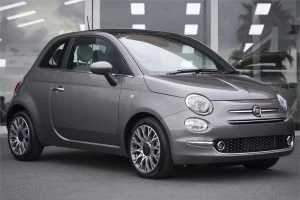
Fiat 500 2022
One of the 2010 super cuties, and still with endless loads of flair, is the nicely packaged turbo-diesel Fiat 500 that captures your attention. Whether it is the 1.3 JTD engine mated to a 5-speed or 6-speed manual gearbox, both options provided a thrifty 4.0–4.5 litres/100 km fuel consumption.
2022 Fiat 500 cars are still available new, of course with all their modern updates and new technology like Apple CarPlay and Android Auto, Bluetooth connectivity, and updated safety technology. The current 500 and 500 Convertible offer a manual or single-clutch automated manual five-speed gearbox that underpins the driving force behind the 1.2-litre 4-cylinder engine producing 51kW and 102Nm. Fiat rate it good for around 4.9 litres/100 km on a combined run, making this a great modern car to drive in an urban setting.
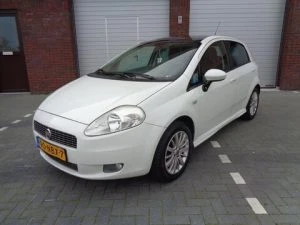
Fiat Punto 2010
In 2010, the Italian flamboyance continued with the Punto 1.3 and 1.4 JTD models. The Punto handles the road well, making it rewarding to drive, while returning a combined 4.6 litres/100 km. Currently, Fiat no longer sells a New Punto model, so, if you’re into Fiats, then the 500 is the one for you.